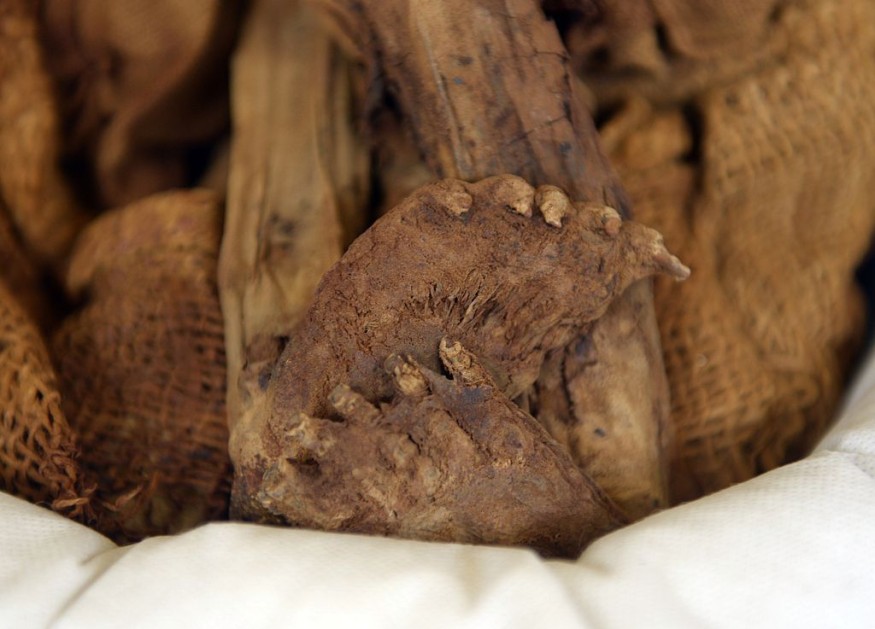German-based scientists have examined a 17th-century mummified infant using cutting-edge science and historical records to shed light on its Renaissance childhood. Science Alert reported that the body was found in an unmarked coffin in an aristocratic Austrian family crypt with conditions for natural mummification.
Interestingly, the mummified infant is the only corpse buried in an unmarked wooden coffin instead of the intricate metal coffin reserved for other members of the family buried there.

Well Fed But Still Malnourished
The family crypt where the mummified infant was found is reserved for the Counts of Starhemberg. The infant was believed to have been interred there sometime between the 16th and 17th centuries.
His tiny features are withered but detailed because of their well-preserved condition. He was wrapped in an elaborate silk garment, but it was clear that his short existence was not a healthy one despite being born into a life of privilege.
The scientists, led by Dr. Andreas Nerlich of the Academic Clinic Munich-Bogenhausen, carried out a virtual autopsy through CT scanning the body. They measured bone lengths and looked at the tooth eruption and formation of long bones of the corpse, which helped them determine that the child was approximately a year old when he died.
More so, the soft tissues left on the body revealed that he was a boy and overweight for his age, implying that the parents were able to feed him well. Unfortunately, he seemed to be malnourished even though he was well-fed.
His ribs were malformed in a pattern called a rachitic rosary, which is a sign of rickets or scurvy. While the typical bones seen in those with rickets are not seen, the team thinks it might be due to the fact that he did not crawl or walk.
Moreover, the virtual autopsy revealed that the child had an inflammation of the lungs, an indication of pneumonia, and children suffering from rickets are more susceptible to lung disease due to nutritional deficiency that may have led to his death.
Nerlich explained in a press release that the combination of obesity and severe vitamin deficiency could be explained by a generally good nutritional status and an almost lack of sunlight exposure. He noted that in understanding the case of the mummified infant, his living conditions as a member of a high aristocratic family should be considered.
Identifying the Infant's Identity
The team had not established yet when the infant was weaned or whether he ate fatty foods rich in vitamin D. But what is known is that his body fat helped keep his remains well preserved. Some recent evidence reveals that vitamin D deficiency is linked to childhood obesity, raising questions about what role his privileged diet might have played in his early death.
Given its silk funerary coat and a coffin buried in the family crypt, researchers suspect he was a firstborn named either Gundaker, Gregor, or Reichard, based on their family tree. But that is another piece of the infant's identity that will likely remain a mystery as there are no inscriptions in its wooden coffin.
Radiocarbon dating of his skin suggests that he was buried between 1550-1635 CE and was the only infant buried in the crypt. Nerlich said they have no data regarding the fate of other infants in the family, but perhaps being a firstborn of the aristocratic family gave him some privileges in being buried there.
Researchers described the corpse in full in the study, titled "Adipositas and metabolic bone disorder in a 16th century Upper Austrian infant crypt mummy-An interdisciplinary palaeopathological insight into historical aristocratic life," published in the Frontiers in Medicine.
RELATED ARTICLE : World's First Known Pregnant Mummy From 1st Century BCE Likely Had Cancer, Researchers Claim
Check out more news and information on Mummy in Science Times.










